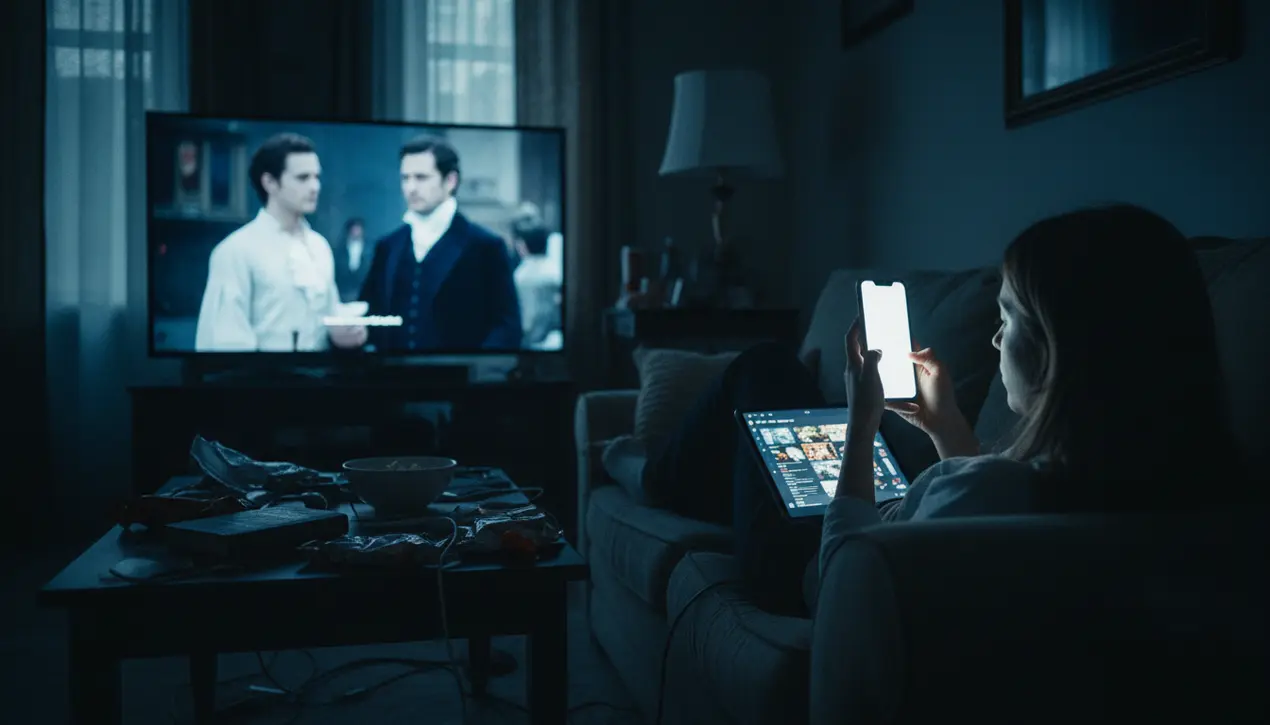
Entertainmentculture & trends
The Second Screen Revolution: How TikTok and Multitasking Are Forcing TV to Adapt
JE
Jessica Stone
21 hours ago7 min read5 comments
Let's be honest—how often do you just sit and watch television without a phone in your hand? You're likely reading this on a screen while a show plays in the background, a behavior that epitomizes the monumental shift Hollywood is racing to accommodate. Our collective focus has been splintered by the infinite scroll of TikTok, Instagram Reels, and YouTube Shorts, creating what the industry terms the 'second screen problem.' This is more than a trend; it's a cultural upheaval fundamentally altering production. Figures like Kris Jenner and corporations like Disney are investing heavily in 'vertical micro-dramas'—episodes filmed for phone screens, sometimes under a minute long, engineered to deliver intense emotional beats before a viewer can scroll away.This represents a core reinvention of narrative for a generation that multitasks by default. The transformation extends beyond new formats.A report from n+1 revealed that Netflix executives are quietly advising writers to make dialogue more explicit, having characters state their actions and intentions so distracted viewers can still follow the story. While no one is openly demanding simpler content, the mandate is clear: acknowledge that your show is competing with the addictive pull of a TikTok feed.This creates a compelling dichotomy. On one side lies the critically acclaimed, complex prestige television of the 'golden age' that required undivided attention.On the other is the rampant success of what Puck News's Julia Alexander calls 'unintentional slop'—easily digestible, often formulaic content that flourishes in a divided-attention economy. Consider the dominance of predictable holiday films or romantic comedies in streaming charts.This isn't a plot to diminish art, but a stark, data-informed reaction to audience behavior. Viewers are choosing comfort food over challenging fare while they simultaneously play mobile games.Yet, a paradoxical hope is emerging from this content saturation. As generative AI threatens to deluge platforms with low-effort material, a counter-movement is anticipated.The very oversupply of mediocre content might trigger a market correction, where audiences, fatigued by the glut, will consciously seek and pay a premium for high-quality, meticulously crafted stories. We may be approaching a future where streamers like Netflix or Apple TV+ split their offerings—providing a vast ocean of AI-generated micro-content for the masses while also maintaining a smaller, more exclusive tier of prestige films and series for discerning subscribers.This represents a painful industry contraction, likely meaning fewer opportunities for creators, but it could also reaffirm the intrinsic value of exceptional art. So, while it may seem like the end of television as we knew it, this could simply be the turbulent transition into a new era where quality, once again, finds a way to rise above the din.
#featured
#TikTok
#micro-dramas
#streaming
#second screen
#attention span
#content trends
#Hollywood
Stay Informed. Act Smarter.
Get weekly highlights, major headlines, and expert insights — then put your knowledge to work in our live prediction markets.
Comments
Loading comments...
© 2025 Outpoll Service LTD. All rights reserved.